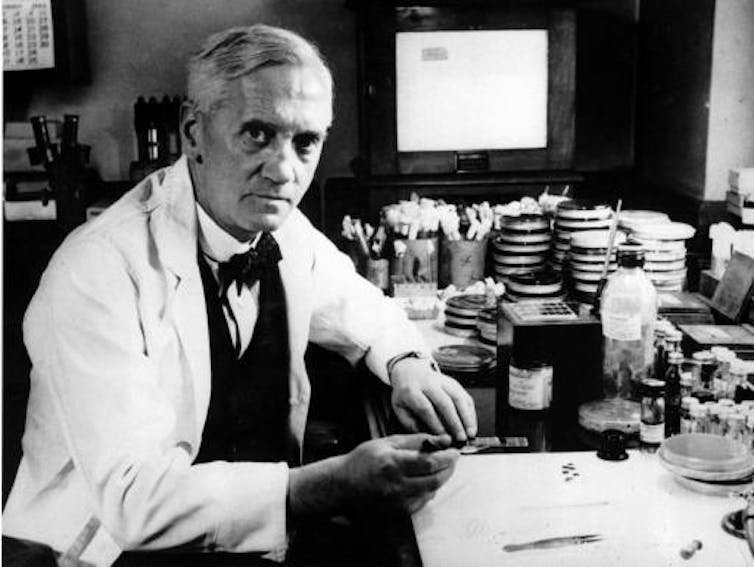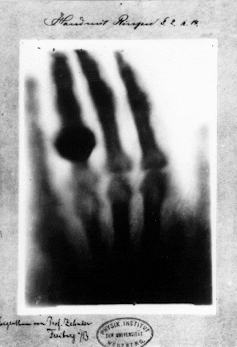You might assume that all great medical discoveries are the result of deliberate action on the part of scientists. But you’d be wrong. Many great discoveries are the result of accidents, mistakes and chance. Here are five of the best, starting with the most recent.
1. Oxford vaccine dose
If the Oxford-AstraZeneca vaccine had been given at the specified dose, the effectiveness of the vaccine at stopping COVID-19 would have been a slightly disappointing 62%. (And I say “slightly disappointing” guardedly because it’s a good result, but next to Pfizer and Moderna’s 95% efficacy, it doesn’t look champagne-poppingly brilliant.)
In Brazil and South Africa, the Oxford vaccine was given at the correct initial dose, and the second dose a month later. But in the UK, the trial participants were incorrectly given half a dose in the first round and a full dose later. And, serendipitously, this resulted in 90% efficacy. Not only that, but the “wrong” dose also resulted in milder side-effects.
2. Penicillin
Perhaps the most famous serendipitous discovery in medicine is Alexander Fleming’s chance discovery of penicillin in 1928. Growing Staphylococcus bacteria that had been left on a bench, he noted on returning from holiday, that one of the plates he was culturing had no bacterial growth around a fungal colony that had started in the plate.
Fleming made his cultures of this fungus – penicillin – available far and wide. It would be one of his former students who first used it to treat a bacterial infection in 1930. And it would be more than ten years later that penicillin was being produced in mass quantities to test its clinical effectiveness on patients, following groundbreaking work from Oxford University.

3. Culturing bacteria
The discovery and study of bacteriology by Robert Koch was a significant scientific advance. Before his work, bacteria were notoriously difficult to isolate from each other and were often grown in a nutrient broth that supports many species. In 1872, Koch noted the growth of distinct colonies on a potato slice and this would be the catalyst for the use of agar, which is now the standard substance used to grow bacteria in a petri dish. This discovery would allow scientists to isolate which bacteria were making a patient ill.
Koch’s work led to him discover the first causative bacteria of a named disease: Bacillus anthracis, which causes anthrax.
4. X-rays
The application of X-rays revolutionised medicine in the late 19th and early 20th century. Wilhelm Röntgen became aware of these new rays, which he called “X” because of their unknown origin, while studying cathode rays (streams of electrodes in vacuum tubes). He noticed that the X-rays could penetrate cardboard, and he quickly used them to show they penetrated human tissues, too, using his wife’s hand to do so.

The application of these rays for looking inside the human body soon became widespread. There was little understanding of the damage they were doing. Many cases of symptoms typical of radiation sickness and exposure were documented, including famous scientists such as Thomas Edison.
5. Stomach ulcers
Over 4 billion people are estimated to be infected with H pylori, a bacterium that lives in the stomach and can cause ulcers. It was the tireless efforts of two researchers – Barry Marshall and J. Robin Warren – and a longer than usual growing period, that led to the discovery of the bacteria. Before this, stress and certain foods were thought to cause stomach ulcers. While these factors can make ulcers worse, they don’t cause them.
In 1982, Marshall and Warren were studying the stomach lining and contents of several patients with varying gastric symptoms. The fortuitous positioning of the Easter weekend meant that cultures from patients were left alone in the lab longer than usual. This resulted in the identification of a slow-growing novel bacteria that was causing these symptoms. Sadly, the reluctance of the scientific community to accept the findings of the scientists led to Marshall infecting himself with H pylori by consuming a live culture of bacteria, becoming symptomatic and then treating himself with antibiotics.

